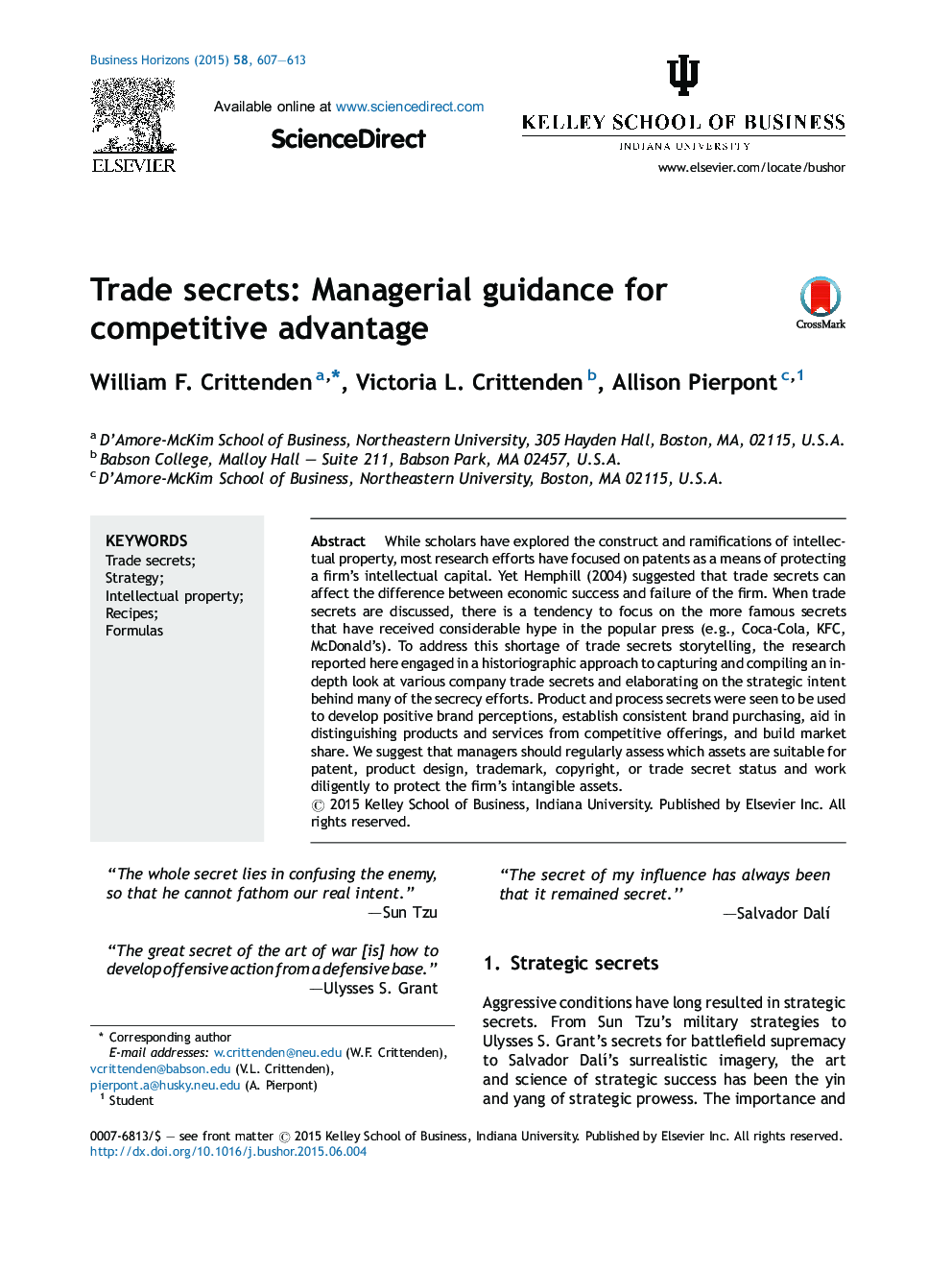| Article ID | Journal | Published Year | Pages | File Type |
|---|---|---|---|---|
| 1013889 | Business Horizons | 2015 | 7 Pages |
While scholars have explored the construct and ramifications of intellectual property, most research efforts have focused on patents as a means of protecting a firm's intellectual capital. Yet Hemphill (2004) suggested that trade secrets can affect the difference between economic success and failure of the firm. When trade secrets are discussed, there is a tendency to focus on the more famous secrets that have received considerable hype in the popular press (e.g., Coca-Cola, KFC, McDonald's). To address this shortage of trade secrets storytelling, the research reported here engaged in a historiographic approach to capturing and compiling an in-depth look at various company trade secrets and elaborating on the strategic intent behind many of the secrecy efforts. Product and process secrets were seen to be used to develop positive brand perceptions, establish consistent brand purchasing, aid in distinguishing products and services from competitive offerings, and build market share. We suggest that managers should regularly assess which assets are suitable for patent, product design, trademark, copyright, or trade secret status and work diligently to protect the firm's intangible assets.
